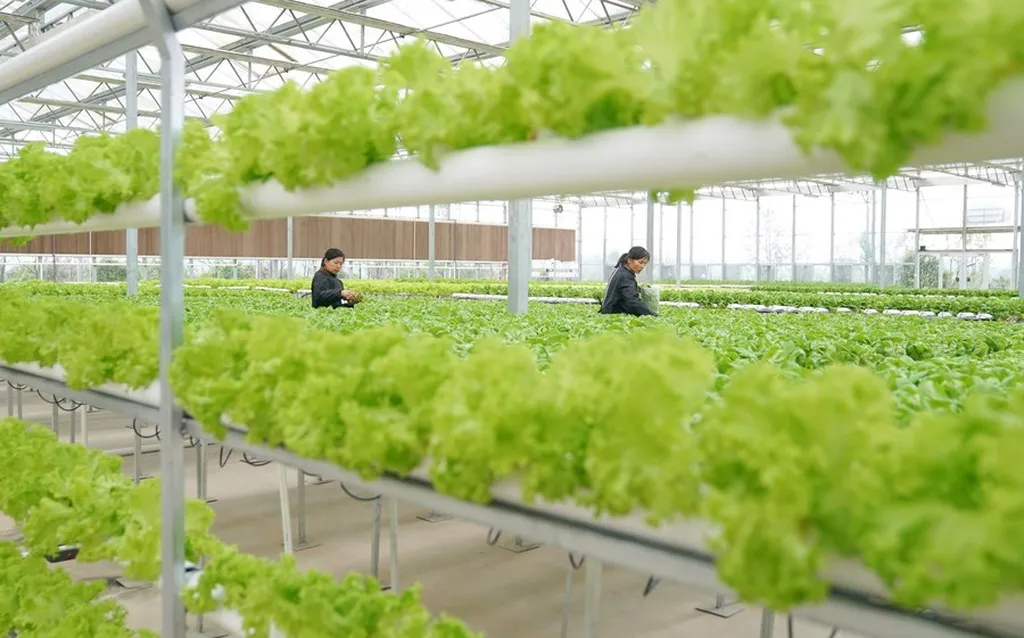In the heart of China’s Guangxi region, a team of researchers led by Shimiao Chen at the Guangxi Subtropical Crops Research Institute has made a significant stride in the world of agricultural biotechnology. Their work, published in the journal *Frontiers in Bioengineering and Biotechnology* (translated as “Frontiers in Bioengineering and Biotechnology”), focuses on enhancing the production of a specific type of antibody fragment, known as a single-chain variable fragment (scFv), which targets abscisic acid (ABA), a crucial plant hormone. The findings could have far-reaching implications for the agricultural and energy sectors, particularly in the development of cost-effective and scalable immunoassays.
Abscisic acid is a key player in plant stress responses, regulating processes such as seed dormancy, stomatal closure, and overall plant growth. Monitoring ABA levels can provide valuable insights into plant health and stress conditions, which is particularly relevant for optimizing crop yields and improving agricultural practices. However, producing these scFv antibodies in a soluble and functional form in Escherichia coli (E. coli) has been a persistent challenge due to issues like misfolding and aggregation.
Chen and her team tackled this problem by co-expressing the ABA-specific scFv with five different molecular chaperones—proteins that assist in the proper folding and assembly of other proteins. The results were promising. “We found that the Trigger Factor (pTf16) significantly improved the soluble yield of the scFv,” Chen explained. “This is a game-changer because it allows us to produce more functional antibodies, which are crucial for developing sensitive and specific immunoassays.”
The study revealed that different chaperones had distinct effects on the scFv’s properties. For instance, the pKJE7 system enhanced the scFv’s sensitivity, making it more effective in detecting low levels of ABA. On the other hand, the pTf16 system improved the scFv’s specificity, reducing cross-reactivity and broadening its detection range. “This flexibility is invaluable,” Chen noted. “It means we can tailor the scFv’s performance to specific applications, whether it’s for high-sensitivity detection or broad-spectrum analysis.”
Structural analysis further underscored the impact of chaperone choice. The pKJE7-assisted scFv closely matched the predicted β-sheet content, which correlated with its high sensitivity. Meanwhile, the pTf16-assisted scFv avoided non-native α-helices, supporting its enhanced specificity. “These structural insights provide a deeper understanding of how chaperones influence protein function,” Chen added. “It’s not just about increasing yield; it’s about ensuring the protein performs as intended.”
The implications of this research extend beyond the lab. In the agricultural sector, the ability to produce cost-effective and scalable scFv antibodies can revolutionize the development of immunoassays for monitoring plant health and stress responses. This, in turn, can lead to more efficient crop management practices, improved yields, and enhanced resilience to environmental stresses.
In the energy sector, the insights gained from this study could also be applied to the development of biosensors and other biotechnological tools. For example, the ability to detect and monitor ABA levels could be integrated into precision agriculture technologies, optimizing water and nutrient use in crops. This not only benefits farmers but also contributes to sustainable agricultural practices, which are increasingly important in the face of climate change.
Chen’s work highlights the importance of molecular chaperones in protein production and the potential for tailored approaches to enhance protein functionality. “This research opens up new avenues for developing low-cost and highly effective immunoassays,” Chen said. “It’s an exciting time for agricultural biotechnology, and we’re just scratching the surface of what’s possible.”
As the world grapples with the challenges of climate change and food security, innovations like these are more critical than ever. By harnessing the power of molecular chaperones, researchers are paving the way for more efficient and sustainable agricultural practices, ultimately benefiting both the environment and the economy. The study, published in *Frontiers in Bioengineering and Biotechnology*, serves as a testament to the potential of cutting-edge research in driving technological advancements and shaping the future of agriculture.

